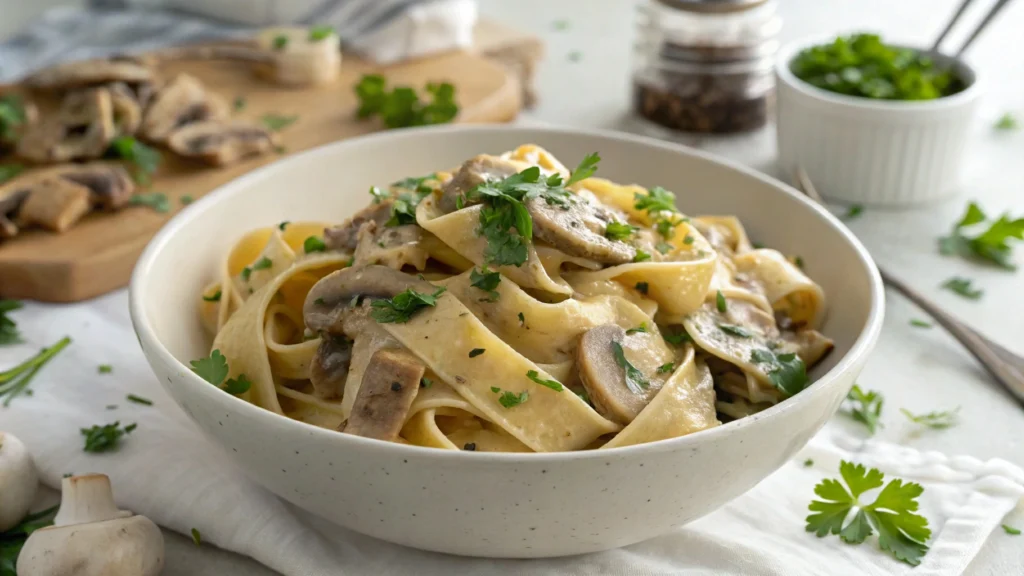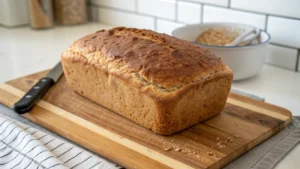Picture twirling wide, silky pappardelle pasta around your fork, each ribbon coated in a creamy mushroom sauce. This Tuscan gem is easier to make at home than you think! Whether you’re a kitchen rookie or a seasoned cook, this guide will teach you how to make perfect pappardelle pasta and whip up a delicious creamy mushroom recipe. Ready to get your hands floury? Let’s dive in!
What is Pappardelle Pasta?
Pappardelle pasta is like the rock star of Italian noodles wide, flat, and ready to steal the show. Hailing from Tuscany, its name comes from pappare, meaning “to gobble up.” These 2-3 cm ribbons are perfect for hearty sauces, soaking up every bit of flavor. Born in rustic Italian kitchens, pappardelle’s history is tied to comforting, farm-style meals. Today, it’s a global favorite for its versatility.
Compared to fettuccine (6-7 mm wide) or tagliatelle (6-8 mm), pappardelle’s broader shape makes it ideal for rich, chunky sauces. Curious about other pastas? Check out our Italian Pasta Guide.

How to Make Homemade Pappardelle
Let’s get real: homemade pappardelle tastes worlds better than store-bought. My first try was a sticky mess, but now it’s a piece of cake! You need just a few ingredients and some elbow grease. Here’s how to nail it.
Ingredients (Serves 4)
- 400g “00” flour (or all-purpose flour)
- 4 large eggs (or for vegan: 200ml water + 1 tbsp olive oil)
- Pinch of salt
Instructions
- Make the Dough:
- Mound flour on a clean surface, make a well, and add eggs (or water and oil) and salt.
- Mix until a shaggy dough forms.
- Knead for 8 minutes until smooth and elastic. It should feel firm but pliable.
- Rest:
- Wrap dough in plastic wrap and rest for 30 minutes at room temperature.
- Roll Out:
- Divide dough into 4 pieces.
- Roll each piece with a rolling pin or pasta machine to 1mm thick (you should just see your hand through it).
- Dust with flour to avoid sticking.
- Cut:
- Lightly flour the sheet, fold loosely, and cut into 2-3 cm wide strips.
- Unfold and dust with flour to separate.
- Cook:
- Boil in salted water for 2-4 minutes until al dente.
Tips
- Dough too sticky? Add a tiny bit of flour.
- No pasta machine? A rolling pin works fine just roll thin.
- Uneven cuts? Use a ruler for consistency.
“Homemade pasta is all about feel trust your hands and have fun!”
Chef Luca Bianchi Serious Eats
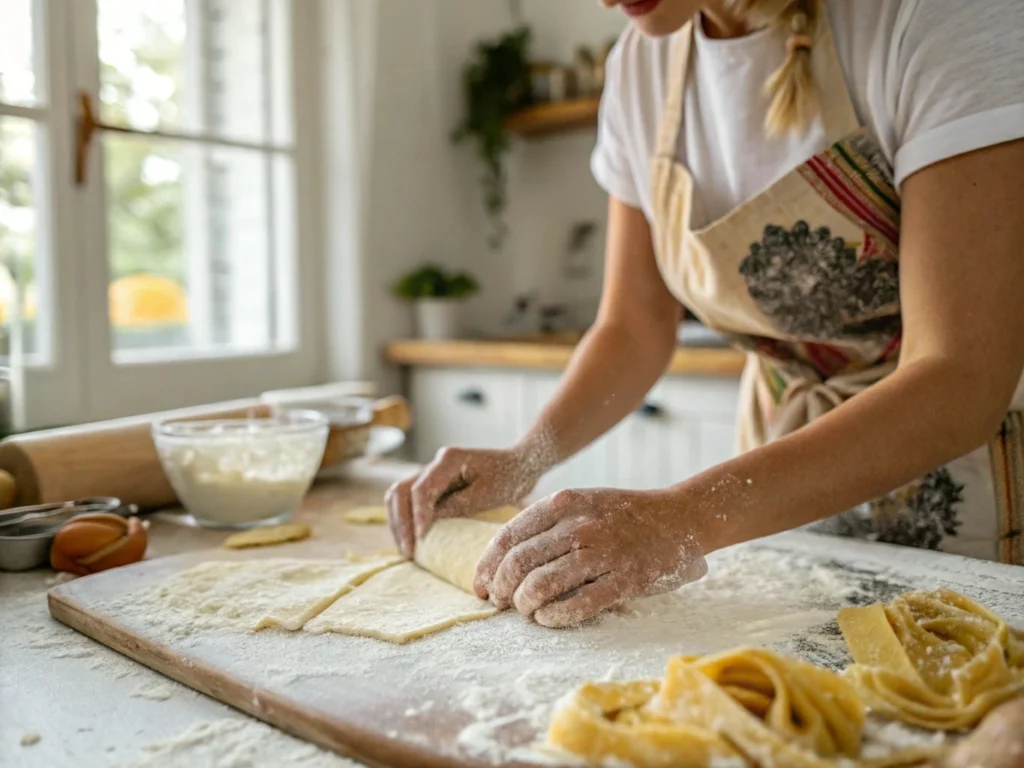
Creamy Mushroom Pappardelle Recipe
This creamy mushroom pappardelle is a vegetarian dream rich, comforting, and ready in 20 minutes. The wide ribbons soak up the velvety sauce, making every bite divine.
Ingredients (Serves 4)
- 400g pappardelle (fresh or dried)
- 300g mixed mushrooms (cremini, shiitake, oyster)
- 200ml heavy cream
- 1 onion, diced
- 2 garlic cloves, minced
- 2 tbsp olive oil
- 100ml vegetable stock
- Fresh parsley, chopped
- Salt and pepper
Instructions
- Heat olive oil in a skillet over medium heat. Sauté onion and garlic until golden.
- Add mushrooms and cook until they release juices and turn golden (about 5 minutes).
- Pour in stock and cream; simmer for 5-7 minutes until thickened.
- Season with salt, pepper, and parsley.
- Cook pappardelle in boiling, salted water until al dente (2-4 minutes for fresh, 6-8 for dried). Drain.
- Toss pasta with sauce and serve hot.
Cook Time: 20 minutes
Calories per Serving: ~550 kcal
Customization Options
- Add:
- Spinach: Stir in a handful for color and nutrition.
- Pine Nuts: Toast and sprinkle for crunch.
- Lemon Zest: Add a pinch for brightness.
- Remove:
- Cream: Swap for coconut milk for a lighter, vegan version.
- Mushrooms: Use zucchini or eggplant for variety.
- Onion: Skip for a milder flavor.
Pro Tip: Mix and match add-ins to suit your taste pappardelle’s versatile!
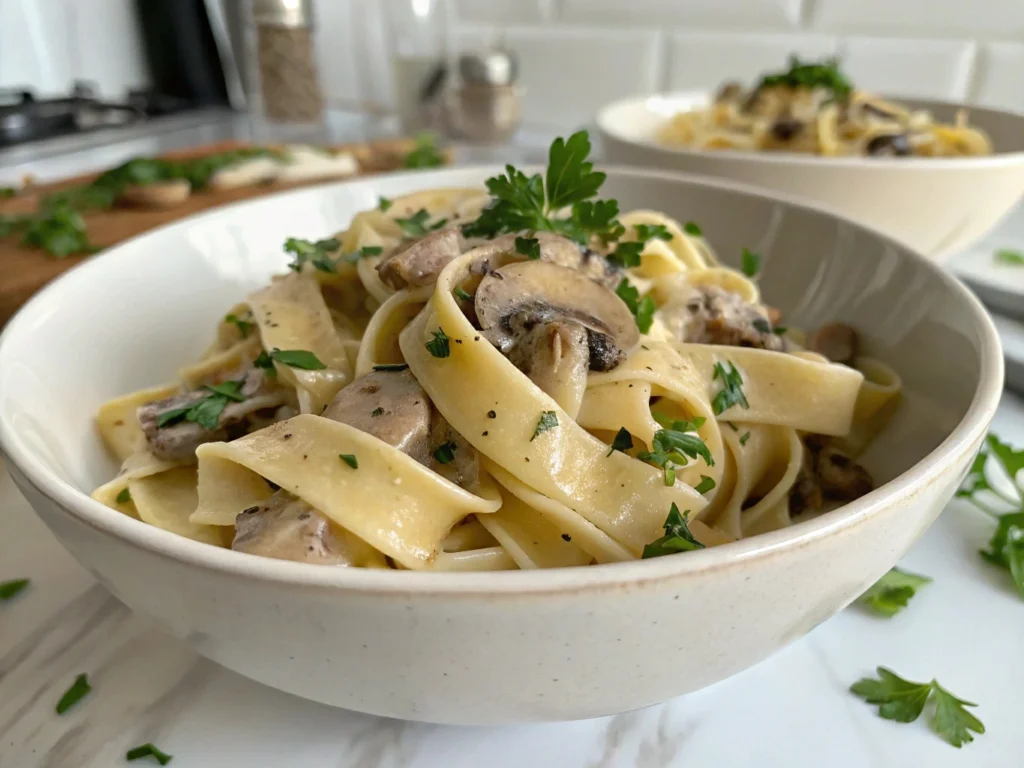
Craving more recipes? Try our Loaded Cheesy Potato Casserole.
Storing Your Pappardelle
Got extra homemade pappardelle? Here’s how to keep it fresh:
- Refrigerate:
- Dust with flour, store in an airtight container, and use within 2 days.
- Freeze:
- Arrange in nests on a floured tray, freeze until solid, then transfer to a freezer bag.
- Store for up to 2 months.
- Cook from frozen, adding 1-2 minutes to boiling time.

Conclusion
Pappardelle pasta is a game-changer rustic, versatile, and so satisfying. With this guide, you can make homemade pappardelle and a killer creamy mushroom dish that’ll wow your table. Whether you add spinach or swap cream for coconut milk, the possibilities are endless. Grab your rolling pin and start creating! Download our free Pasta Recipe eBook for more ideas, and share your dishes with #YumRecipeLandPasta!
FAQs
What is pappardelle pasta?
Wide, flat pasta from Tuscany, ideal for hearty sauces.
How do you make pappardelle from scratch?
Knead flour and eggs (or water), roll thin, cut into 2-3 cm strips, and cook for 2-4 minutes.
What sauces go with pappardelle?
Creamy, meaty, or tomato-based sauces work best.
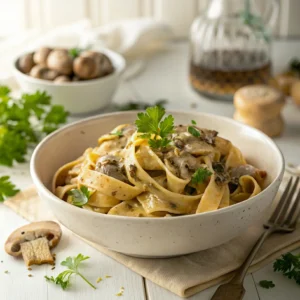
Creamy Mushroom Pappardelle
Equipment
- Large Pot
- Skillet
- Tongs
Ingredients
- 12 oz pappardelle pasta
- 2 tablespoons olive oil
- 1 lb mixed mushrooms such as cremini, shiitake, and oyster, sliced
- 3 cloves garlic minced
- 1/2 cup dry white wine
- 3/4 cup heavy cream
- 1/2 cup grated Parmesan cheese
- 2 tablespoons chopped parsley
- salt and pepper to taste
Instructions
- Cook pappardelle in salted boiling water until al dente. Reserve 1/2 cup pasta water and drain.
- In a large skillet, heat olive oil over medium heat. Add mushrooms and cook until golden, about 8–10 minutes.
- Add garlic and cook until fragrant, 1 minute more.
- Deglaze with white wine and cook until reduced by half, about 3–4 minutes.
- Stir in cream, Parmesan, and reserved pasta water. Simmer for 2 minutes.
- Add cooked pasta and toss until coated. Season with salt, pepper, and parsley.
